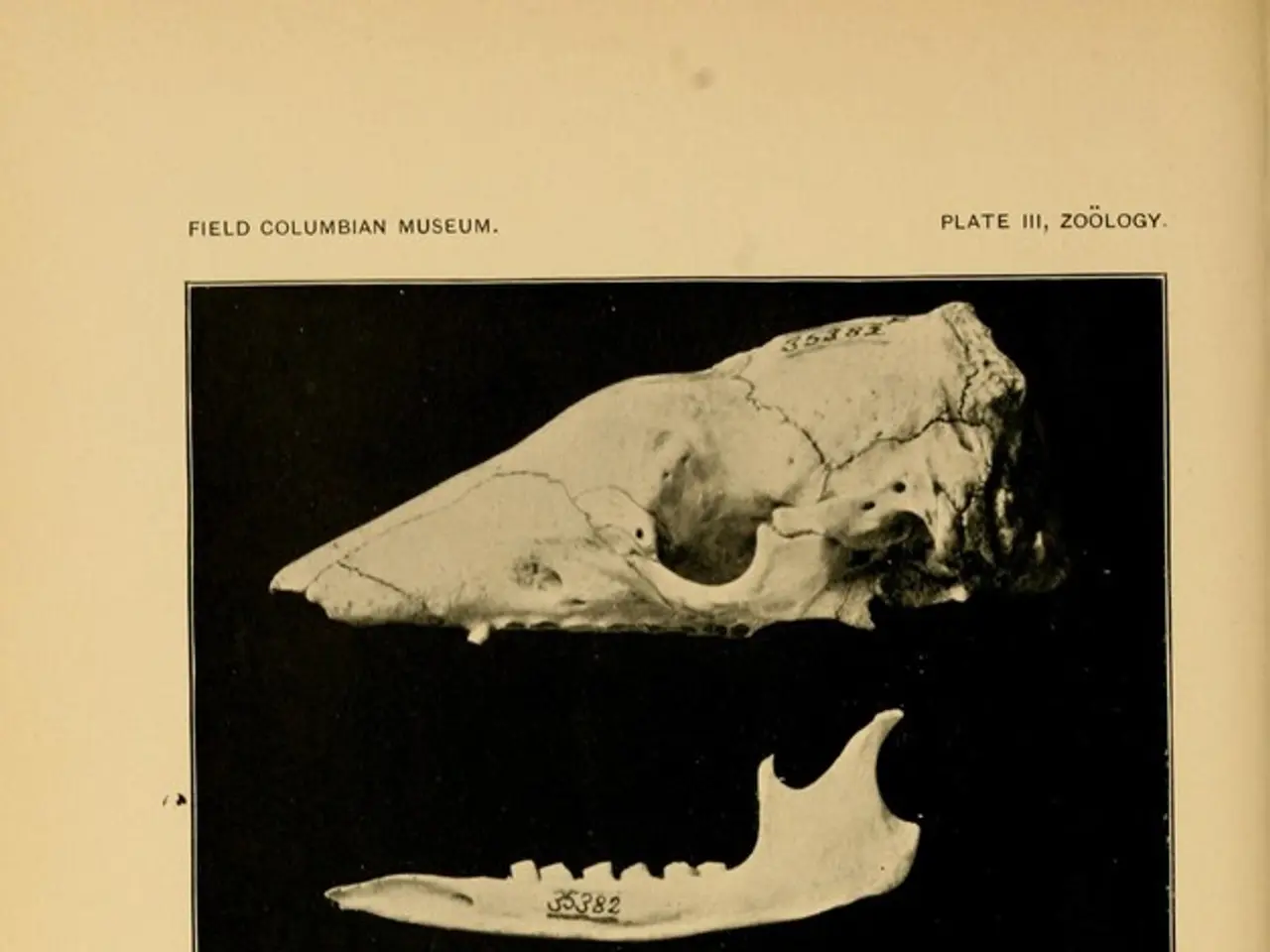Bone deterioration in the spinal column: Recognizing signs, causes, and remedies
In the management of spine osteoporosis, a focus on weight-bearing and resistance exercises is crucial. These exercises help improve bone density and strength, while minimising movements that could stress or potentially injure the fragile spine.
Key guidelines and exercises for those with spine osteoporosis include:
- Avoid high-risk exercises: Steer clear of activities that bend, flex, or twist the spine, such as sit-ups, crunches, certain Pilates or yoga poses, and high-impact activities like running and jumping rope, as they increase the risk of fractures.
- Weight-bearing exercises: While they are beneficial, weight-bearing exercises should be chosen carefully. Walking, a safe and effective weight-bearing exercise, is recommended for those with osteoporosis.
- Strength training exercises: These are essential for engaging major muscle groups without compromising spinal safety. Examples include bridges, clamshells, bodyweight squats and lunges, wall push-ups, resistance band rows, step-ups, and standing heel raises.
- Tai chi and stretching: These provide gentle movement, improve balance, and reduce fall risk, which is critical in osteoporosis management.
- Consult a healthcare provider: Before starting any exercise program, it's important to consult with a healthcare provider to ensure the routine is safe given the individual's specific condition.
In addition to exercise, a balanced diet is essential for bone health. Calcium, obtained from dairy products, calcium-fortified milk alternatives, tofu, cereal, bread, orange juice, sardines, dark leafy greens, and broccoli, is vital for bone health. Vitamin D, which can be obtained from safe sunlight exposure, oily fish, fortified cereals, and sometimes supplements, is also crucial for bone health.
Quitting smoking or reducing smoking can also be beneficial for those with osteoporosis, as it helps with new bone growth, slowing bone loss, maintaining muscle strength, and balance. For those finding it difficult to reduce alcohol consumption, speaking with a doctor or mental health professional about getting support is recommended.
It's important to note that while treatment can help stop the progression of bone loss, spine osteoporosis is not fully reversible. However, with the right diet, exercise, and treatment, individuals can manage their condition effectively.
References: [1] National Osteoporosis Foundation. (2021). Exercise and Physical Activity. [online] Available at: https://www.nof.org/patients/treatment/exercise/
[2] Mayo Clinic. (2021). Walking: Trim your waistline, improve your health. [online] Available at: https://www.mayoclinic.org/healthy-lifestyle/weight-loss/in-depth/walking/art-20046261
[3] American College of Sports Medicine. (2020). Exercise and Osteoporosis. [online] Available at: https://www.acsm.org/docs/default-source/resources-main/position-stands/position-stands---exercise-and-osteoporosis---final-reviewed-2020.pdf
[4] Harvard Health Publishing. (2018). The best exercises for osteoporosis. [online] Available at: https://www.health.harvard.edu/staying-healthy/the-best-exercises-for-osteoporosis
[5] U.S. National Library of Medicine. (2021). Exercise for osteoporosis. [online] Available at: https://medlineplus.gov/ency/patientinstructions/000554.htm
- Weight-bearing exercises, such as walking, are recommended for those with spine osteoporosis to improve bone density and strength.
- Carefully chosen weight-bearing exercises can be beneficial in the management of osteoporosis, but high-risk activities like sit-ups and running should be avoided.
- Strength training exercises, like bridges, clamshells, and wall push-ups, are essential for engaging major muscle groups without compromising spinal safety in osteoporosis management.
- Tai chi and stretching can provide gentle movement, improve balance, and reduce fall risk, which is critical in managing osteoporosis.
- Before starting any exercise program, it's important to consult with a healthcare provider to ensure the routine is safe given the individual's specific condition.
- A balanced diet rich in calcium, found in dairy products, leafy greens, and tofu, and vitamin D, obtained from sunlight and oily fish, is essential for maintaining bone health.
- Quitting smoking can help with new bone growth and maintaining muscle strength, while reducing alcohol consumption may be beneficial for those with osteoporosis, although finding it difficult to do so may require professional help.




